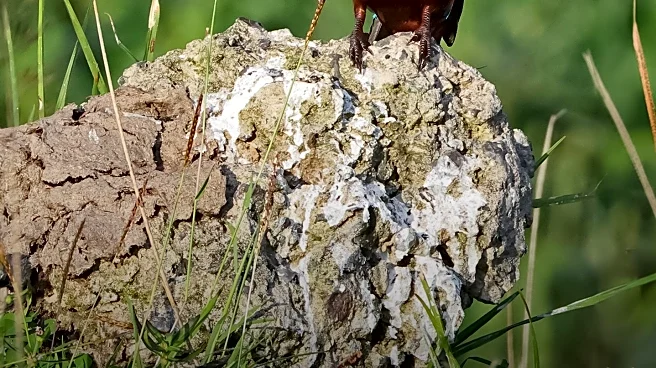What's Happening?
The white-throated kingfisher, a vibrant and adaptable bird species, is thriving in Israel's non-desert regions and expanding into desert areas due to agricultural growth. Unlike other kingfishers, this
species has a diverse diet, feeding on insects, reptiles, mammals, and birds, rather than primarily fish. Dr. Yoni Vortman from Tel-Hai University highlights the bird's adaptability to human-altered environments, making it a keystone species with significant ecological impact. Despite challenges like avian flu, the kingfisher's resilience ensures its continued success in various habitats.
Why It's Important?
The white-throated kingfisher's adaptability underscores the complex relationship between wildlife and human activity. As a generalist predator, its ability to thrive in diverse environments highlights the potential for certain species to benefit from human-induced changes. This adaptability may influence conservation strategies, emphasizing the importance of supporting species that can coexist with human development. The kingfisher's success also serves as a reminder of the ecological roles played by generalist predators in maintaining ecosystem balance.
What's Next?
Researchers may continue to study the white-throated kingfisher to understand its ecological role and adaptability further. Conservationists might explore ways to support other species that can thrive alongside human activity, potentially using the kingfisher as a model for resilience. Additionally, ongoing research could reveal more about the microevolutionary processes affecting this species, providing insights into how wildlife adapts to changing environments.
Beyond the Headlines
The white-throated kingfisher's success in human-altered environments raises questions about the long-term impacts of urbanization and agriculture on wildlife. Its ability to adapt may inspire new approaches to conservation, focusing on species that can coexist with human development. The bird's vibrant appearance and complex vocalizations also offer opportunities for further study into the evolution of color and song in avian species.











